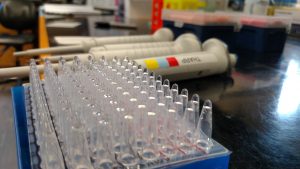 Discovering clinically relevant tactics to balance energy homeostasis and combat metabolic disorders such as obesity and diabetes is of the upmost importance. Brown adipose tissue (BAT) is a thermogenic organ that consumes energy substrates to generate heat through the mitochondrial uncoupling protein-1 (UCP1). The recent discovery that adult humans possess functional BAT and activating BAT can increase its uptake of circulating glucose and fatty acids suggests its potential therapeutic application on controlling glucose homeostasis and energy metabolism.
Discovering clinically relevant tactics to balance energy homeostasis and combat metabolic disorders such as obesity and diabetes is of the upmost importance. Brown adipose tissue (BAT) is a thermogenic organ that consumes energy substrates to generate heat through the mitochondrial uncoupling protein-1 (UCP1). The recent discovery that adult humans possess functional BAT and activating BAT can increase its uptake of circulating glucose and fatty acids suggests its potential therapeutic application on controlling glucose homeostasis and energy metabolism.
To study BAT, we have developed a novel method to differentiate and support the implantation of brown adipose-like fat, or beige fat. We employ an innovative Matrix-assisted Cell Transplantation (MACT) system to support the differentiation of both human and mouse pluripotent stem cells and adipose-derived mesenchymal stem cells into functional BAT, or beige adipose tissue. The establishment of the human BAT-MACT system allows us to investigate the roles of extracellular microenvironments to support human BAT formation and maintain its function, metabolic characterization of human BAT and its effects on energy metabolism, mechanisms of human BAT expansion and maintenance, and screening pharmaceutical activators of human BAT.
We have now deployed this system in vivo and found that our Beige Adipose Tissue Matrix Assisted Cellular Implant (BAT-MACT) was able to metabolically augment the recipient. BAT-MACT recipients demonstrated elevated metabolism, improved glucose homeostasis, elevated core body temperature during cold challenges, and reduced weight gains on high fat diets. This system was developed with clinical application in mind, and thus employs materials and cell sources that will translate directly into therapeutic use to combat metabolic disorders.
